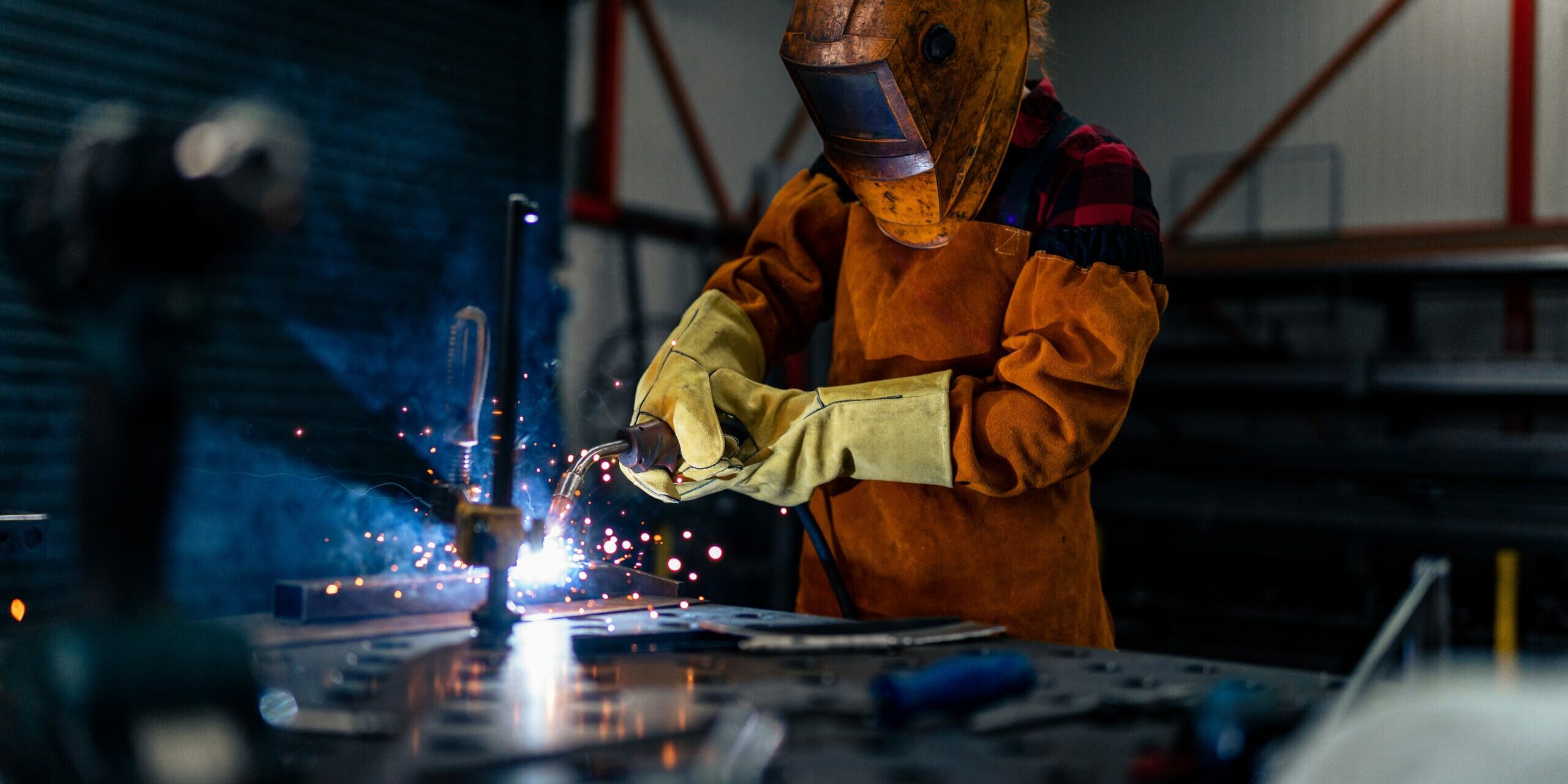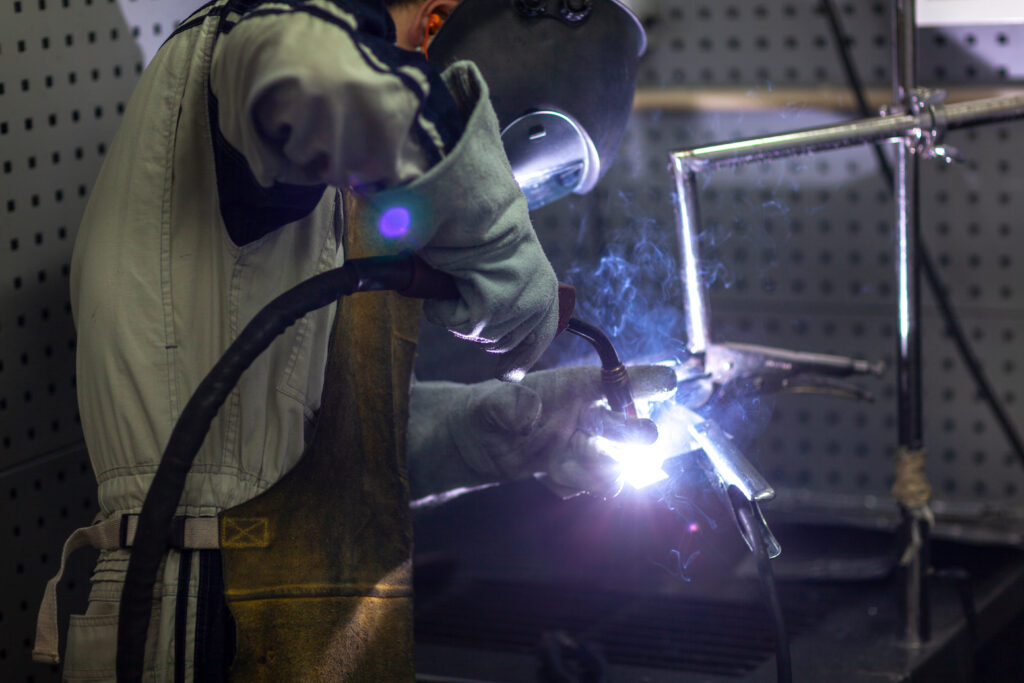As technology advances, the demand for skilled welders continues to grow. If you are considering a career in welding, attending a welding school is a fantastic step toward gaining the knowledge and hands-on experience you need. But what exactly will you find in a welding workshop? In this article we will explore the essentials that make up a well-equipped welding workshop and how they contribute to your education.
The Welding Workshop Environment
Entering a welding workshop for the first time can be an impressive experience. The workshop is a hectic environment full of tools, equipment and various materials. These are some of the things you can expect to find:
Welding booth
Welding booths are individual workstations where trainees can practice their techniques. Each booth is equipped with essential safety features like ventilation systems, fire-resistant walls, and welding curtains to protect against sparks and UV radiation. These booths allow students to focus on their tasks without distractions and in a safe environment.
Welding machine
A variety of welding machines are available in a workshop, each suited for different welding techniques. These machines are fundamental tools that welders must learn to operate efficiently. Common types include:
Welding consumables and Raw materials
Consumables are materials that get used up during the welding process. Understanding the correct use of these consumables is crucial for producing strong, clean welds. These include:
- Electrodes: Used in stick welding to create the arc.
- Filler Rods: Used in TIG welding to add material to the weld joint.
- Shielding Gas: Protects the weld from contamination.
A range of metal materials is essential for practice and training. Hands-on experience with different materials helps trainees adapt to various welding scenarios they might encounter in their careers. Workshops typically provide:
- Steel Plates: Commonly used for initial training.
- Aluminum Sheets: For advanced practice, as welding aluminum requires different techniques.
- Pipes and Tubes: To practice welding joints and complex structures.
| Tips for a successful welding | |
| Proper Setup | Ensure that your welding machine is set up correctly, with the appropriate wire type, diameter, and shielding gas for your material. |
| Clean Surface | Always clean the surfaces to be welded to remove any rust, paint, or contaminants that could affect weld quality. |
| Consistent Technique | Maintain a consistent travel speed and gun angle to produce even welds. Practice makes perfect. |
| Proper Safety Gear | Wear appropriate safety gear, including a welding helmet, gloves, and protective clothing, to shield yourself from sparks and harmful UV radiation. |
| Regular Maintenance | Keep your equipment in good working order with regular maintenance, including cleaning the gun nozzle and checking the wire feed system. |
Essential tools and Equipment
In addition to welding machines and basic materials, there are several essential tools and equipment for a complete welding training:
- Safety gear: Safety is paramount in welding. Every trainee must use proper safety gear, including gloves, welding helmets, aprons or jackets.
- Hand tools: Basic hand tools are vital for preparing materials and finishing welds such as wire brushes and angle grinders.
- Measuring and layout tools: Precision is key in welding. Tools like rulers, squares, and calipers are essential for measuring and marking metal pieces accurately. Holding metal pieces in place while welding is also crucial for achieving precise and strong welds. Clamps and fixtures of various sizes and types help secure materials.
Welding Training & Curriculum
A welding workshop is more than just a collection of tools and equipment; it is where theory meets practice. A well-structured curriculum needs to cover:
1) Welding techniques: Detailed instructions on MIG, TIG, and stick welding.
2) Blueprint reading: Understanding technical drawings and specifications.
3) Metallurgy: Basics of metal properties and how they affect welding.
4) Safety practices: Comprehensive training on maintaining a safe work environment.
Transforming a Welding Lab into an Augmented Reality Lab
The integration of Augmented Reality (AR) into educational environments has been transforming the way trainees learn and practice various skills, and welding is no exception. By transforming a traditional welding lab into an AR-enhanced lab, training centers and high schools can offer significant advantages that enhance the learning experience.


|
Key benefits of welding training with AR |
|
|
Improved safety |
|
|
Sharpened learning efficiency |
|
|
Cost-effectiveness |
|
|
Increased accessibility |
|
|
Enhanced skills development |
|
|
Real world simulation |
|
|
Environmental advantages |
|
Soldamatic Augmented Training for Welding
As the demand for skilled welders continues to grow, an Augmented Lab represents a forward-thinking approach to meeting this need and shaping the future of welding education.
By embracing Soldamatic AR technology, educational institutions and other industrial companies can provide a cutting-edge learning experience that prepares trainees for successful careers in the welding industry.
Soldamatic’s calibration involves studying welding procedures in a real-world environment and using various scenarios to generate extensive and informative datasets. This data is then integrated into Soldamatic’s advanced software, which, combined with hardware like welding torches, delivers comprehensive welding training exercises. Additionally, icons have been added to the simulation to offer greater detail and better detect faults. Furthermore, Soldamatic records all data and training parameters in real-time, enabling the identification and correction of errors either on site or immediately after the exercise is completed.
Soldamatic offers a welding solution that enhances safety, efficiency, and cost-effectiveness in welding education. This welding simulator has been developed by welders to train the future workforce. In fact, there are many vocational schools that have already applied the Augmented Methodology in their training system.
Unlocking Potential in the Welding Workshop
Transforming a traditional welding lab into an Augmented Reality lab offers numerous advantages that enhance safety, learning efficiency, cost-effectiveness, accessibility, and environmental sustainability. If you are ready to spark your future, an AR welding workshop is a dynamic and resource-rich environment designed to equip trainees with the skills needed to excel in the welding industry.
Every component plays a vital role in the learning process. By mastering these tools and techniques, beginners can embark on rewarding careers in a field where skilled welders are always in demand. Soldamatic equips with the skills and confidence they need to excel in the welding industry, preparing a highly competent and environmentally conscious workforce for the future.













